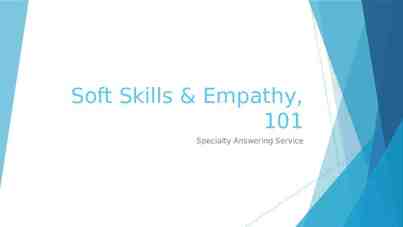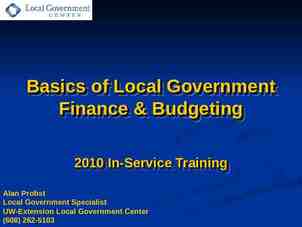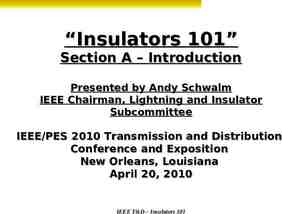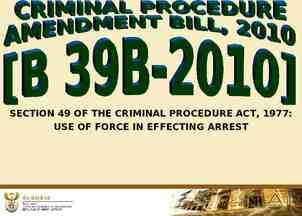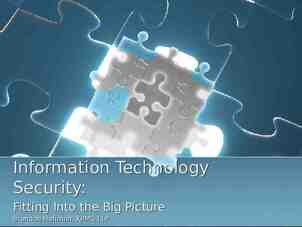Why Upgrade to Release 12? WIIFM? Cost and Related Improvements
30 Slides843.50 KB

Why Upgrade to Release 12? WIIFM? Cost and Related Improvements Douglas Volz Douglas Volz Consulting [email protected] Sharon Widmer Independent Consulting s [email protected]

Agenda R12 Cost Related Features MOAC – Multi-Org Access Control Subledger Accounting Re-Designed A/P Accruals COGS Recognition Cost-Related BOM Features Period Close Drilldown As-of Dates for Inventory Valuation Reconciliation Challenges Cost Rollup Changes Slide 2

R12 Multi-Org Access Control Mostly affects “operating unit” level functions Allows you to access information across multiple operating units without changing responsibilities Set up a security profile listing the operating units to access Run Security List Maintenance concurrent program Assign the security profile using the MO: Security Profile Slide 3

R12 Multi-Org Access Control Slide 4

SLA: Primary and Secondary Ledgers Primary and Secondary Ledgers In Release 12 Subledger Accounting replaced Global AX Primary to secondary ledger mapping is much better Corporate Consolidated Ledger Corporate Consolidated Ledger (USD) Secondary Ledger Switzerland (CHE) Korea (KRW) Asia-Pac LEs Swiss PL (USD) Slide 5 European LSP’s SLs LSP’s European PL (USD) USA PL (USD)

Oracle Discrete Costing SLA enhancements: Flexible variance account recognition for: Invoice price and purchase variances Average cost adjustment Standard cost adjustment Manufacturing variances Account aliases Freight charges Most other inventory, manufacturing and related account entries Slide 6

SLA Setup and Process Overview JOURNAL ENTRY SETUPS PROCESS Enter Transaction(s) Define/copy and modify account derivation rules Cost Manager Define/copy and modify journal line types Create Accounting* Define/copy and modify descriptions Transfer Journal Entries to GL *Run ‘Create Accounting – Cost Management’ concurrent request for accounting all transactions from the Cost Management – SLA responsibility. Receiving Accounting can be generated in the Purchasing responsibilities using the ‘Create Accounting – Receiving’ concurrent request. These requests have an option to transfer the entries created to General Ledger. A separate process is also available. Slide 7

Subledger Accounting SLA for product line accounting, variance recognition Accounting Configurations Subledger Journal Entries Transactions GL Journal Entries and Balances Accounting Program Subledger Balances Accounting Events Journal Entry Setup SLA Cost Management Slide 8

Subledger Accounting SLA Basic Architecture Enter Transaction(s) Cost Manager Transaction Accounting Tables Create Accounting One Common Accounting Subledger Table Same Cost Transaction Accounting Tables SLA Accounting Tables G/L Tables XLA EVENTS GL LEDGERS XLA AE HEADERS GL INTERFACE GL JE BATCHES XLA AE LINES GL JE HEADERS XLA DISTRIBUTION LINKS GL JE LINES Slide 9

Subledger Accounting and Inquiries Tools menu options (View Accounting and View Accounting Events) launch SLA UI pages (HTML) which display the information regarding the accounting event with the transaction and its corresponding accounting Clicking on distributions button shows the default accounting from MTL TRANSACTION ACCOUNTS Slide 10

Subledger Accounting and Inquiries - View Accounting Accounting details for the Miscellaneous receipt transaction in the SLA UI (launched from the Tools menu) Accounting is created for all ledgers associated with the primary ledger (Vision Operations (USA)) Slide 11

COGS Recognition In R12 all customer shipment entries go to deferred COGS Revenue and COGS are explicitly matched AR: “Autoinvoice” & “Revenue Recognition Master Program” CST: “Inventory Cost Processor” or “Record Order Management” CST: “Collect Revenue Recognition Information” CST: Then “Generate COGS Recognition Events” New Accounting Entries to clear deferred COGS Use the COGS Revenue and COGS Matching Report Slide 12

COGS Recognition – Accounting Entries New Accounting Entries to clear deferred COGS Inventory 1. Customer Shipment 10 Deferred COGS 10 10 2. COGS Recognition “True” COGS 10 Use the COGS Revenue and COGS Matching Report Slide 13

New Deferred COGS Account Slide 14

COGS Recognition (Continued) Dependencies This new feature introduces a dependency in the Receivables and Costing period close processes Costing will process COGS recognition events in a closed inventory period until the Receivables period status is set to CLOSED You have to run Create Accounting after you have closed your inventory orgs Having to remember to run COGS Recognition Processes followed by Create Accounting may create confusion at month-end Slide 15

Related BOM Features Fixed Component Usage Support: Support for lot-based materials that have a fixed usage regardless of the job size for discrete WIP jobs, OSFM lot-based jobs and Flow Manufacturing Component Yield Support: Flexibility to control the value of component yield factors at WIP job level. The transaction logic now considers pre-yield BOM quantity per assembly rather than the quantity inflated by shrinkage. Slide 16

Period Close Diagnostics Forms Drilldown Using the same Inventory Accounting Periods form you can drilldown to associated forms to view the problem transactions New workflow to notify of failing transactions Period Close Pending Transactions Report Report for the transactions holding up the inventory accounting period Slide 17

A/P Accruals Perpetual A/P Accruals are Completely Rewritten Monthly load into summary tables Excellent detail and summary reporting (same report/different templates) A/P Accrual write-offs go to your G/L Works right out of the box! Period End Accruals: Calculate Accrual Balances at PO Distribution Level Period-end accrual entries stored in a separate accounting table and automatically reversed in the new month Uninvoiced Receipts Report and Period-End Accruals use same underlying code / same results Slide 18

Reconciliation Improvements in R12 Inventory Reconciliation Inventory Value Reports have an “as of date” Inventory Value Report Receiving Value Report Intransit Value Report All Inventories Value Report Slide 19

Reconciliation Challenges in R12 Subledger Accounting and Inventory Reconciliation Which accounts represent inventory and WIP valuation? Release 12 dropped the valuation accounts on most inventory reports Dropped Reports (use: R12 Open Account Balance Listing and Account Analysis report ) Receiving Value by Destination Account Report Subinventory Account Value Report and the Cost Group Account Value Report have been dropped Slide 20

Reconciliation Challenges in R12 (Continued): Material and WIP Distribution Inquiries and Reports Release 12 Mat’l and WIP distribution inquiries & reports do not reflect the SLA results SLA Journal Reports do not show operational information Release 12 records the Material accounting and WIP accounting entries by cost element – rendering the old 11i inquiries and reports more difficult to use, especially for Standard Costing. Release 12 forces Standard Costing to record WIP & Material entries by Cost Element / you can summarize in SLA but you don’t have the same detail reporting in SLA Slide 21

Basic Table Structure for SLA Enter Transaction(s) Accounting Processor Transaction Accounting Tables Receiving Material WIP Create Accounting Module Specific Transaction Accounting Tables One Common Accounting Subledger Table SLA Accounting Tables G/L Tables XLA EVENTS GL LEDGERS XLA AE HEADERS XLA AE LINES XLA DISTRIBUTION LINKS Slide 22 GL INTERFACE GL JE BATCHES GL JE HEADERS GL JE LINES

Cost Rollup Changes The Supply Chain Cost Rollup and Cost Rollup have been combined Slide 23

Cost Rollup Changes Slide 24

Summary Subledger Accounting solves many account classification issues Yet Subledger Accounting causes additional reconciliation headaches Yet one more interface and batch job More levels of indirection: multiple accounting tables Which accounting table to tell your auditors and how to explain to them it is different? Must run Cost Management Subledger Period Close Exceptions Report (by ledger –but you can use Ledger Sets) Slide 25

Summary (continued) COGS Recognition works well, just have to get used to entries hitting after you close the inventory accounting periods New period close diagnostics Inventory reconciliation issues are improved and also hindered in Release 12 Inventory value reports have as “as of date” But most inventory value reports have no valuation accounts Still only single warehouse Period Close Reconciliation Report not multi-org (consider custom reports from the period close snapshot table cst period close summary) Slide 26

Acknowledgements Oracle Cost Development Partners in crime at our clients Slide 27

Sharon Widmer (s [email protected]) Professional Background . With over 25 years total work experience, Sharon Widmer is an accomplished Oracle Functional Consultant and Accounting Manager, specializing in manufacturing and distribution companies. She has 14 years experience implementing Oracle Applications, and over 10 years in Accounting for Manufacturing and Distribution companies. Sharon has helped clients with Oracle implementations (Release 11.0.3 through Release 12.1) and process reengineering for Inventory Control and Accounting. Industries she has worked in include High Tech, Building Construction & Industrial Products, Telecommunications, and Life Sciences. In a recent consulting role Sharon helped a Chip Test Equipment manufacturer and their Cost Management team get to the next level. As a SME for Inventory Control and Cost Accounting, she helped them achieve significant process redesign and Oracle configuration changes, which resulted in more accurate Inventory Control and a streamlined, faster Cost Month End Close. Core Expertise Data Conversion – Data Cleansing Standard Costing Manufacturing Processes Cost Management Inventory Warehouse Management WIP Bills of Material Experience Clients Served: Form Factor Stryker Endoscopy Qualcomm USG Toshiba America Business Systems Amkor Technology JDS Uniphase Slide 28

Douglas Volz ([email protected]) Professional Background Doug Volz is a Senior Architect and Advisor for Oracle Application projects, with a particular interest in Project and Cost Management. He has 30 years accumulated experience, including 5 years in Oracle Development (co-designing Oracle Cost Management) and 12 years in industry in Cost and Accounting Management positions. His Manufacturing and Cost systems experience covers project management, software design/development, delivery and consulting services, for both Oracle Corporation, and multiple international consulting firms. Prior to his systems career, Mr. Volz also held numerous management accounting positions for telecommunications, defense, and electronics companies. In his consulting roles, Doug has served over 100 clients. Many of these were multi-org, multi-currency with global footprints. Countries include US, Mexico, UK, Netherlands, Belgium, Taiwan, P.R.O.C., Norway, Japan, Italy and Germany. Doug leads the Cost Sub-Committee, for the OAUG Discrete Manufacturing Special Interest Group. He also advises and participates on the Oracle Customer Advisory Board for Fusion Costing. Core Expertise Experience Multi-organization, Multi-currency ERP Implementations Project Management and Senior Project Advisor Core manufacturing processes Cost Management Inventory Bills of Material WIP Systems Integration and Data Conversions Sample of clients served: Beckman Coulter (US) Matsushita (UK, Mexico) NTL (now Virgin Media) Logitech (US, Taiwan, P.R.C.) Matsushita (UK, Mexico) NTL (now Virgin Media) TCI International (US) Onninen AS (Norway) Slide 29

Thanks for allowing us to discuss these topics with you! Slide 30

